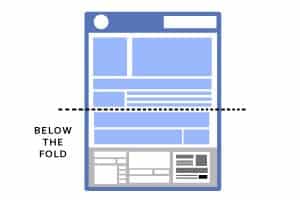
The first thing that anyone notices about any website is the design. Design can single-handedly make or break your website. So, it is important to audit the design to ensure consistency.
The primary goal of the design of a website is to make the site appealing and improve the interaction, which can range from downloading an eBook to booking a consultation. Whatever the interaction is, it aims at fulfilling customer needs.
There are a lot of metrics that validate when the design successfully wins over the users. However, it’s quite a difficult task to understand when it fails to impress. If the design fails, it may lead the users in two directions:
- Making them confused
- Abandoning your site.
How Design Audit Can Help Us Solve This Issue
Design consistency is something that not only adds to the appeal but also ensures the fact that your website is conveying the same message to your potential and existing customers at the same time at any point.
Unknown to many, the process of design audit helps in evaluating and structuring the entire design critically. Similar to the SEO audit or any other audit, it consists of inspecting the whole design and ensuring that the design is conveying itself consistently and serving the purpose. If something is wrong, the design audit is responsible for detecting the issue(s).
Do I Really Need a Design Audit?
Through a design audit, you improve the small and minor design elements (that are crucial) on your site to improve the user experience and website traffic. And the next thing that pops up in your mind is: are customers going to look at such small design components?
The answer is: YES!
Even a change of color on a CTA button leads to thousands of traffic and action. On that note, a design audit comes in handy to detect the design tailbacks and suggest the proper alternatives to improve the interaction of the website.
Note
You cannot stick with one design approach that might have been successful in the past because your company has grown. And what worked in the past has a great possibility of not working now because of the growth.
How Does Design Audit Help an Organization?
Here are some of the ways how the design audit can help your organization to do well.
- With a design audit, you will be able to evaluate the various dimensions of your entire design and be aware of the features that need to be restructured.
- Just like the financial audits, the UX audit makes use of factual approaches to improve usability and user experience.
- Evaluating the functionality of an organization at every stage of growth is very easy with the design audit. The UX audit process helps in managing the functions and visual designs as well as maintaining a consistent tone.
- Overall, the design audit assists in inspecting the entire design, its quality, user experience, and the strength of the company’s branding.
How Does UX Audit Help the Designers?
Auditing the design allows the designers to do the following:
- They can understand the landscape of particular workflows or components.
- They can understand what is useful, what is not, what could make improvements, and where lies the scope for improvement.
- They can understand which are considered the best practices and the reason(s) behind it.
Auditing the design is not a child’s play. One has to keep records of everything to make informed decisions in the future from documented findings. The entire UX auditing is all about the research, insights, and recommendations. So, instead of making decisions out of instincts, designers have to be aware and informed.
How to Do a Design Audit?
Here comes the million-dollar question. Doing UX audit is a complex process that has to be handled with care. A single mistake can be the downfall of an entire website. So, here are some feasible steps of conducting a design audit on a website, which should get the job done perfectly.
What You Are Auditing
Different design components have different characteristics and different ways of handling. So, before you do anything, make sure that you are well-aware of what you are auditing. A lot of components are there in a design, such as a search box, buttons, navigation, date pickers, and whatnot! While these are the simpler components, you may audit something comparatively more complex like account creation flow. Whatever you do or how simple or complex it is, you should know what exactly you are looking for.
Who You Are Auditing for
Is the design focused on consumers or is it dedicatedly developed for enterprise? Is it focused on the teens or an older age group? These are a couple of many questions that you should ask yourself before auditing the design. Knowing the audience whom the design is for would help you audit the design with a purpose.
Furthermore, if you want to understand the best design practices for a particular audience, you may have a look at a few websites and apps to know what the big players are doing that makes them successful. You need to understand one fact that demographics, industry, device, anything can set trends. So, you need to be attentive to everything.
Screenshot is Must
When you are auditing the UX of a website, screenshot is your best friend to remember things and keep it documented for later. Take screenshot of everything from interactions to pages, states, etc. If you don’t do it, there’s a chance that you may lose some data at some point and you may eventually end up doing it, but that would consume double of your time.
Take the screenshots and keep them organized in a folder and subfolders to find them later. So, you will be able to refer back to them easily when you need.
Review and Organize What You’ve Captured
It’s very easy to get confused between such a huge number of images. It’s hard to remember what is where, who did what, and the entire order. So, it would be a wise choice to review all the screenshots and organize them in a way that your works become easier.
To organize the screenshots, note down the categories that come up the most while reviewing them. Then start organizing them into buckets. To organize them into buckets, try to figure out the common features, characteristics, and traits among the products. Accordingly, you may make your bucket of different types of products.
Document Everything and Share
Now, that you have an intuitive insight, you can document them and share with your team to explain to them the reason behind your verdicts. You can use anything from the keynote presentation to the UX framework guideline format as per your convenience.
What to Evaluate During the Design Auditing Process?
This is the most logical question after knowing how to do the UX audit. Worry not! We’re here to provide you with every little detail of what areas to explore for a perfect UX audit.
User and Business Objectives
Evaluating whether a business is achieving conversion goals (if not, how much shortfall), and whether the users are adapting to the business is a good idea to have revealing statistics.
Conversion and Bounce Rates
It would be a good idea to research the standard conversion rate of the industry and compare it against the rates achieved by the business you are working for. Also, check the bounce rate to know how many users are leaving the website without being converted. Reducing conversion rates and rising bounce rates are the signs of trouble that should be fixed.
Usability Compliance Guidelines
Take a look at whether the user experience and usability of the website are up to the mark. Developers follow prevalent recommendations and guidelines for the improvement in user experience. Check whether there’s an issue with that and adhere to the best UX design practices to improve the usability.
User Mental Models
Understanding the viewpoint of the end-users is one of the most important parts of a design audit since the perception of a user can make or break the fate of a website. So, it would be a great area to evaluate during your auditing process.
Design and Branding
Auditing the design of a website is a great way to understand whether the current branding and design are interrupting the user sentiment and conversion rate. And that’s why it becomes one of the foremost facets of a design audit.
Insights We Get from Design Audit
There are a lot of insights we get from the UX audit that helps in understanding and identifying the design glitches and usability issues.
- Relevance
- Value Proposition
- Usability
- Action
When Do You Need UX Audit?
Despite the fact that the design audit is often ignored by many organizations, it is very important to stay relevant. Here are the instances when you need a UX audit.
- Redesign of a Website
- Redesign of a Product
- Timely Website Revamp
Conclusion
A design audit or UX audit can turn out to be an immensely useful venture. Not only does it improve your website design, but it also gives inputs on maximizing the conversion rates and user engagement. In today’s date, when you have hundreds of other businesses to compete with, it’s absolutely necessary to keep each and every element of your website in line. And UX design audit is something that can help you keep your site in trend.









